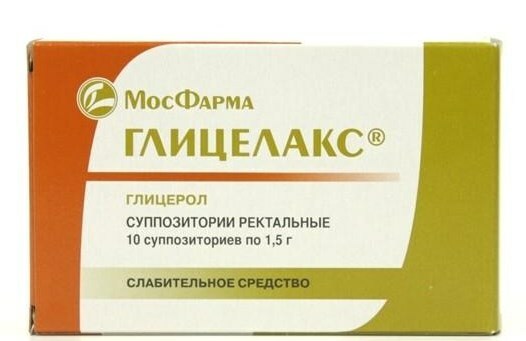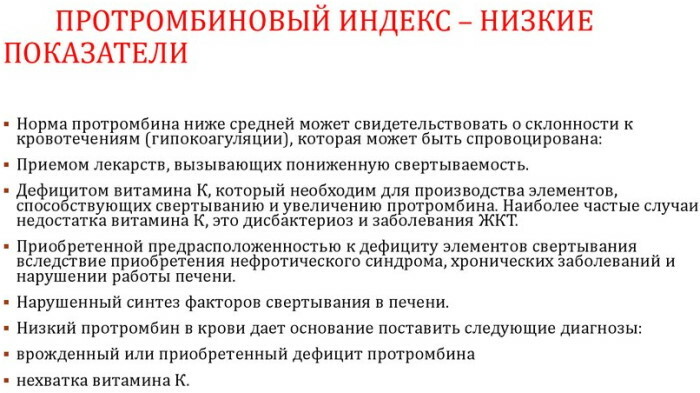Angina is usually attributed to the number of seasonal pathology. Outbreaks of the incidence of acute tonsillitis in children and adults recorded in the spring and autumn. In this case, the infection is most susceptible children and young people under the age of 35 years.

What it is?
Acute tonsillitis common name - angina - an infectious disease with local manifestations in the form of components of acute inflammation lymphatic pharyngeal ring, most of the tonsils caused by streptococci or staphylococci, rarely other microorganisms, viruses and fungi.
Causes of
Acute tonsillitis is caused by a manifestation of the influence on the glands of bacteria called streptococcus. They enter the body when in contact with an already infected person, it can be a simple conversation, coughing or sneezing. Also disease occurs at long staying at a high humidity and low temperature.
The bacteria can enter the body and subsequently eating poorly washed products, because they can also be infected by streptococci.
Acute tonsillitis can develop by breeding bacteria that are present in the gaps of the tonsils. This type of infection is hypothermia, the transfer of other diseases, stress and fatigue. For example, when the fall of the feet get wet, or hot summers you drink cold juice.
Most often, the disease affects children and young people under thirty-five years. Not only observed in infants, because they still have a good undeveloped lymphoid tissue. We should not exclude the possibility of infection and those who can not tolerate extremes of temperature. Also cause acute tonsillitis is a violation of nasal breathing. Polluted air gets into the respiratory tract, thereby causing inflammation. Malnutrition is also referred to as causes of tonsillitis.
Classification
Angina can be divided into banal (conventional) and atypical. By banal include the following forms: catarrhal, follicular, lacunar. Atypical forms include ulcerative necrotic angina (Simanovsky - Vincent - Plaut), fungal angina (usually caused by Candida albicans), quinsy (intratonzillyarny abscess).

Common symptoms
The disease usually has a sufficiently acute manifestations. The main symptoms of tonsillitis include the following:
- fever, in some cases up to 39-41 degrees;
- appearance of plaque on the tonsils;
- increase in tonsil size;
- a feeling of weakness and body aches;
- increase in submandibular and cervical lymph nodes;
- appetite loss;
- severe pain in the throat;
- headache;
- pain in the joints and back.
Symptoms in adults
Often acute tonsillitis symptoms depend on the form of the disease. Bluetongue occurs easiest, most difficult - necrotic. The main symptoms of any angina - severe sore throat and fever, the other symptoms depend on the type of lesion:
- Acute lacunar tonsillitis is characterized by lesions of the tonsils with purulent appearance of plaque in their area. However, he does not go beyond the tonsils, easily peeled off without causing bleeding. With this type of angina temperature rises to 39 - 40 degrees, intoxication symptoms are observed.
- Acute catarrhal tonsillitis characterized by a low temperature and absence of signs of intoxication. Inflammation rarely affects the tonsils, held a few days after onset of the disease, sometimes goes to other forms of angina.
- Acute necrotizing tonsillitis - the most severe form of the disease. Tonsillar portions are formed with a dark coating, leaving in the fabric body. When attempting to remove it occurs bleeding, areas of necrosis can occur outside of the tonsils. There is high fever, symptoms of intoxication are particularly pronounced, nausea, vomiting can reach, there is fever and mental confusion.
- Acute follicular tonsillitis is characterized by the appearance of follicles, small entities, on the tonsils. Follicles suppurate, with their opening is formed purulent plaque does not extend beyond the tonsils. With this type of sore throat is present high fever, the symptoms of intoxication.
Against the background of acute tonsillitis may experience various complications. Some of them are developed almost immediately after the onset of disease, such complications include otitis, sinusitis, multiple abscesses in the mouth, lymph nodes.
There is also a late complications that develop in a few weeks after the onset of tonsillitis. These include rheumatoid arthritis, rheumatic heart disease and others, they develop due to improper or delayed treatment, as well as extensive infectious lesions.
complications
Of the consequences of acute tonsillitis the most frequent acute otitis media, acute laryngitis, laryngeal edema, abscess neck peripharyngeal abscess, acute cervical lymphadenitis.
The most dangerous complication of angina:
- In the early stages - abscesses of the pharynx (the formation of large cavities filled with pus), the spread of infection in the chest on the fascial spaces of the neck to form mediastinitis, the cranial cavity with the development meninges inflammation (meningitis), toxic shock (food poisoning organism vital functions of microbes and decay of body tissues), sepsis ( "blood poisoning", ie the penetration of infection into the blood and its spread throughout the the body);
- In later stages (2-4 weeks) - acute rheumatic fever, glomerulonephritis (inflammation of the kidney infectious origin, leading to serious health disorders, up to renal failure).
Extremely dangerous complications of tonsillitis is the inflammation of tissues (tissue) surrounding the tonsils. Penetration of infection into these tissues leads to the formation of abscesses (abscess). Their appearance suggests a sharp increase in pain on one side of the larynx, difficulty in turning the head from side to side. Abscess formation takes place during the day and requires a speedy hospitalization. Often in this case, resort to surgical intervention.
Diagnostics
The analysis of the patient's complaints, history of disease assessment, inspection of the pharynx (pharyngoscope).
To determine the type of pathogen is performed smear from tonsils. This is usually determined by the sensitivity and specific pathogen resistance to antibiotics.
How to treat acute tonsillitis?
Treatment of acute tonsillitis must be comprehensive, then recovery will be much faster. In the treatment of angina drug selection depends on the type of microbe that caused the disease. Type of drug, dosage and method of application are determined by the attending physician.
- In the treatment of fungal angina (an illness triggered mainly by a fungus of the genus Candida), use antifungal drugs. Fungal angina often occurs after prolonged antibiotic treatment.
- In the treatment of angina bacterial use different kinds of antibiotics and antimicrobial agents of synthetic origin (dependent on the sensitivity microbe and the patient's response to drug), various local antiseptics, which are produced in the form of a spray or mist, as well as tablets, lozenges and pastilles.
- Treatment of viral angina involves the use of anti-inflammatory drugs as well as symptomatic agents.
There are general recommendations during home treatment:
- patient isolation in a private room;
- regular airing of rooms;
- Wet cleaning of the room daily;
- selection separate dishes for the patient;
- drinking plenty of fluids;
- the exception is too hot food;
- the food should be warm, puree;
- You can not eat spicy, acidic foods (which further irritate the throat).
Antipyretic drugs to be taken at a temperature of 38.5 degrees or more. Are appointed by the following drugs:
- Aspirin;
- ibuprofen;
- Nurofen;
- Paracetamol.
ALWAYS causal treatment (aimed at the causative agent).
antibiotics
Antibacterial drugs are taken necessarily in purulent (bacterial) forms of tonsillitis. Antibiotics are a broad spectrum of antibacterial activity:
- Penicillins (Amoksiklav, Flemoklav, Augmentin);
- Macrolides (Hemomitsin, Azithromycin, Klatsid);
- Cephalosporins (cefixime, Zinnat, Ceftriaxone).
The dosage, frequency and duration of reception are determined solely by the attending physician. Typically, the antibacterial treatment is about ten days, but not less than seven.

antihistamines
Antihistamines are used to relieve the swelling of the tonsils:
- diazolin;
- Tsetrin;
- Suprastin.

antivirals
At the moment, these are the most popular antiviral drugs:
- Kagocel;
- Ingavirin;
- Arbidol;
- Ergoferon.
When the viral etiology of acute tonsillitis used antiviral drugs, however, in the scientific community are still being intense debate about the effectiveness of these drugs. Opponents of antiviral therapy reasonably argue that its action has had little effect.

irrigation of the mucous
Lozenges and lollipops have not only anti-inflammatory effect, but also a pain reliever:
- Falimint;
- Dr. Mom;
- Septolete;
- Antiangin;
- Faringosept.
Irrigation of the mucous tonsils carried out:
- Ingalipt;
- Stopangin;
- kameton;
- geksoralom;
- Lugol.

gargling
Used for gargling:
- furatsilin;
- hydrogen peroxide;
- sodium carbonate solution;
- sea salt;
- miramistin;
- chlorhexidine;
- herbal infusions.
Rinsing can be carried out every 1.5-2 hours, alternating between several funds. After the procedure, do not drink within 30 minutes.

How to protect loved ones?
Since angina - an infectious disease, it can be transmitted from an infected person healthy. In this regard, you must adhere to the following hygiene standards:
- the patient should be a separate dishes and cutlery;
- after recovery, it is recommended to replace the toothbrush of the patient, so it does not get infected again;
- the patient's room need to be aired every day (the patient in this case must be in the other room);
- should be deleted and kissing others in close contact with the patient until complete disappearance of symptoms;
- the period of treatment should not visit crowded public places, including public transport and place of work (advised to take out a sheet of temporary disability).
Thus, tonsillitis in adults requires careful attention. The disease can occur very hard, knocking the man out of a rut for a long time.



